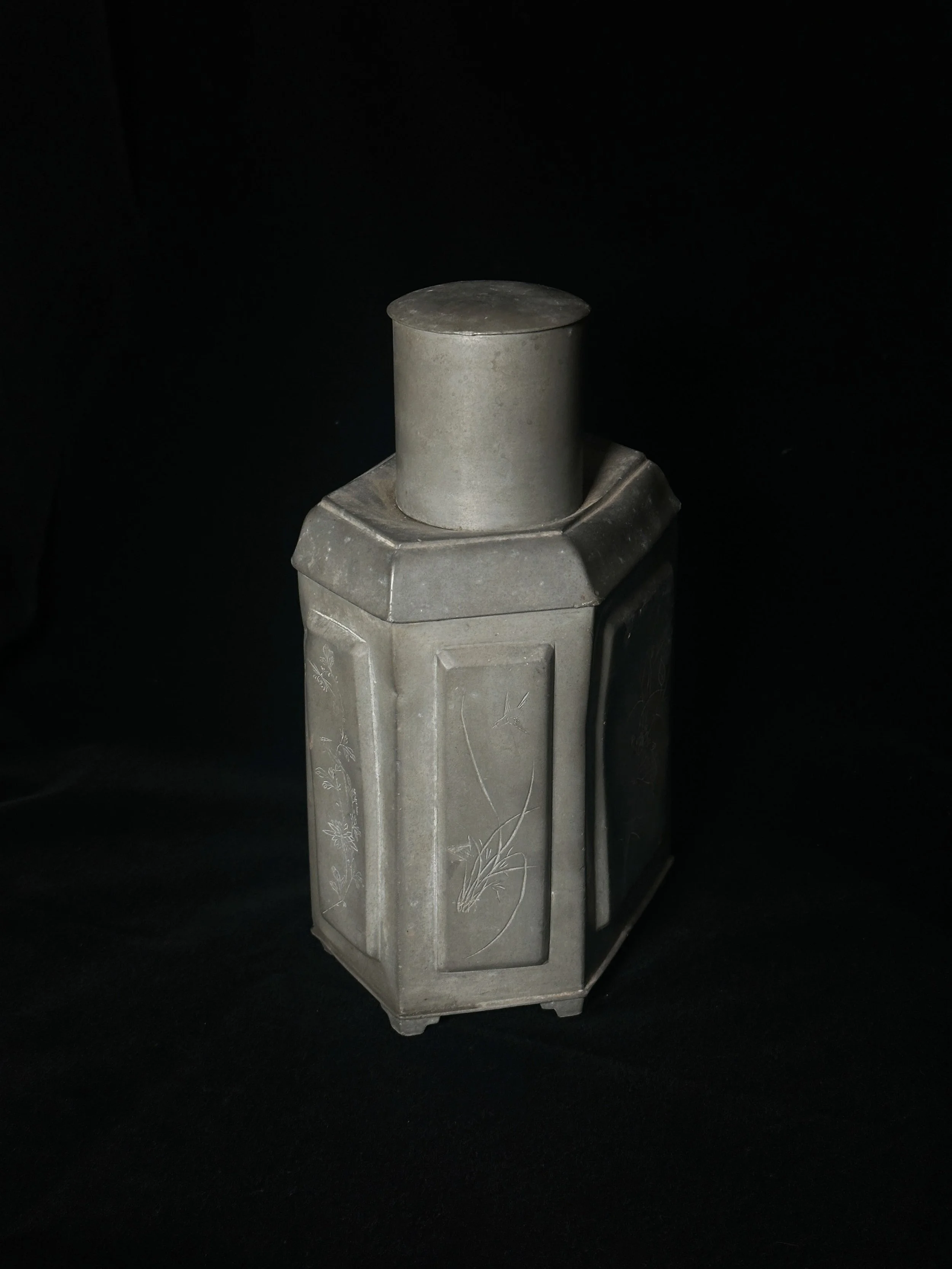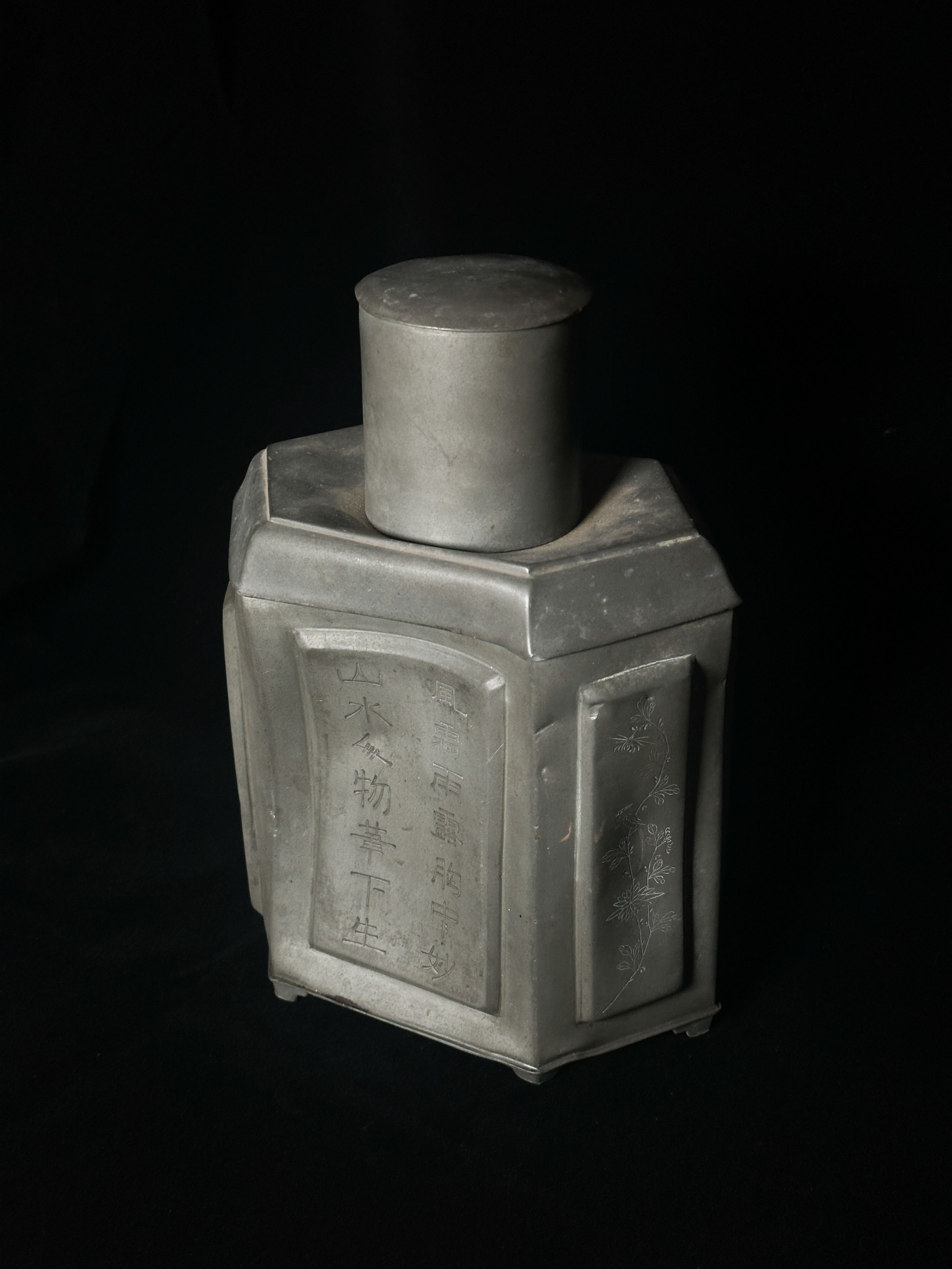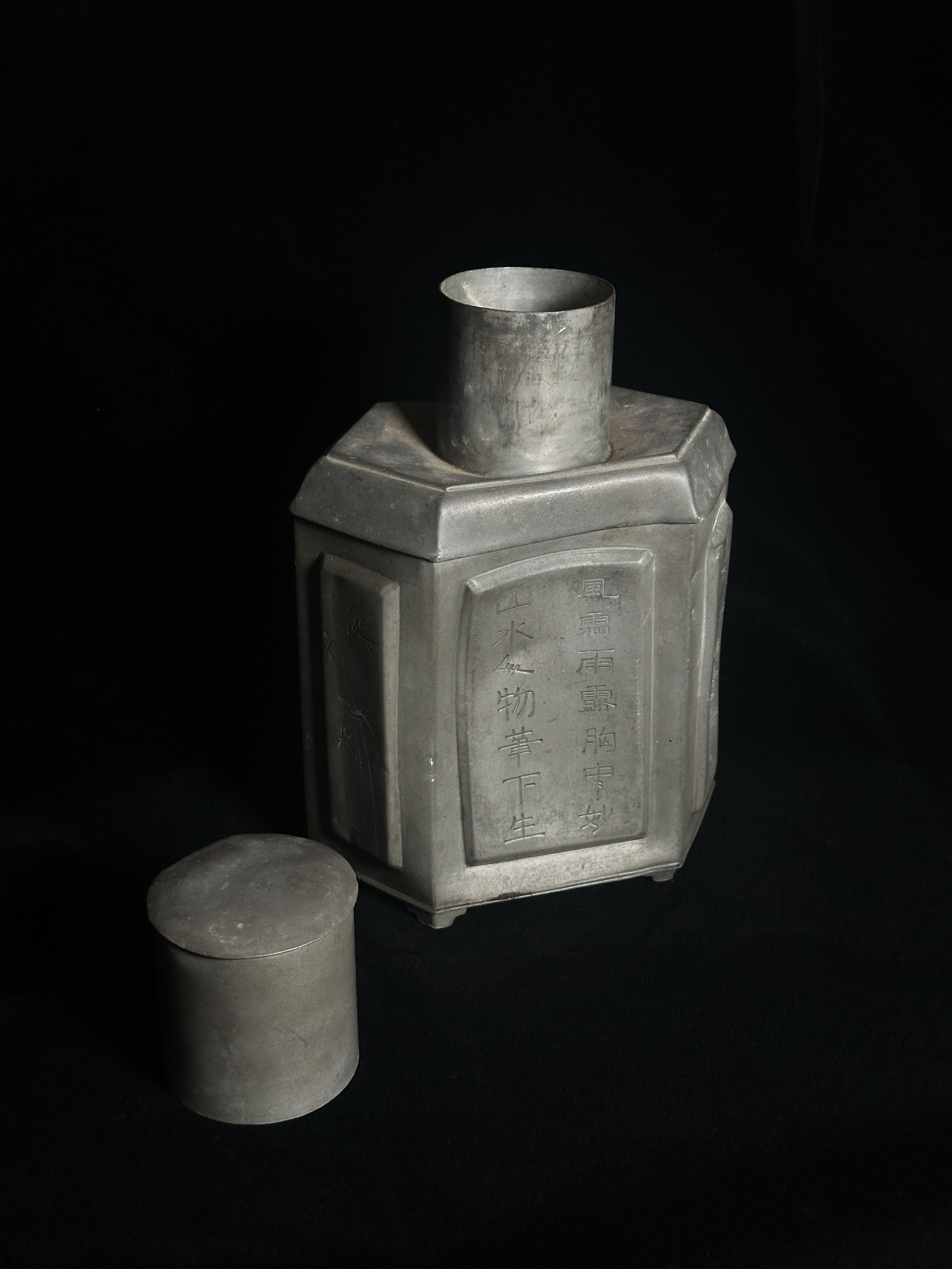 Image 1 of 9
Image 1 of 9

 Image 2 of 9
Image 2 of 9

 Image 3 of 9
Image 3 of 9

 Image 4 of 9
Image 4 of 9

 Image 5 of 9
Image 5 of 9

 Image 6 of 9
Image 6 of 9

 Image 7 of 9
Image 7 of 9

 Image 8 of 9
Image 8 of 9

 Image 9 of 9
Image 9 of 9










Antique Chinese Pewter Tea Canister with etched Calligraphy Panels
Late Qing to Early Republic Period
An understated yet sculptural hexagonal pewter tea canister, likely crafted in southern China during the late Qing to early Republic period (circa late 19th to early 20th century). Its tall, cylindrical lid nests into a precisely beveled top, balancing the angular silhouette with a quiet, architectural rhythm.
Each of the six sides is framed with subtly raised panels—two etched with floral motifs and two inscribed with classical Chinese calligraphy, evoking traditional poetry and the scholar's retreat. The tone is muted, the surface softly oxidized with time, lending a sense of stillness and permanence. A vessel once meant to preserve the fragrance of tea leaves now carries a different weight: that of memory, atmosphere, and ritual.
Ideal as a sculptural object, a functional container, or part of a considered vignette. A quiet piece that holds presence.
Dimensions: 25x18x12cm / 10 x 7 x 4.5”
Material: Pewter
Origin: Southern China
Condition: Surface oxidation consistent with age. Lid fits snugly. No major dents or cracks. Beautifully preserved.
Late Qing to Early Republic Period
An understated yet sculptural hexagonal pewter tea canister, likely crafted in southern China during the late Qing to early Republic period (circa late 19th to early 20th century). Its tall, cylindrical lid nests into a precisely beveled top, balancing the angular silhouette with a quiet, architectural rhythm.
Each of the six sides is framed with subtly raised panels—two etched with floral motifs and two inscribed with classical Chinese calligraphy, evoking traditional poetry and the scholar's retreat. The tone is muted, the surface softly oxidized with time, lending a sense of stillness and permanence. A vessel once meant to preserve the fragrance of tea leaves now carries a different weight: that of memory, atmosphere, and ritual.
Ideal as a sculptural object, a functional container, or part of a considered vignette. A quiet piece that holds presence.
Dimensions: 25x18x12cm / 10 x 7 x 4.5”
Material: Pewter
Origin: Southern China
Condition: Surface oxidation consistent with age. Lid fits snugly. No major dents or cracks. Beautifully preserved.
Late Qing to Early Republic Period
An understated yet sculptural hexagonal pewter tea canister, likely crafted in southern China during the late Qing to early Republic period (circa late 19th to early 20th century). Its tall, cylindrical lid nests into a precisely beveled top, balancing the angular silhouette with a quiet, architectural rhythm.
Each of the six sides is framed with subtly raised panels—two etched with floral motifs and two inscribed with classical Chinese calligraphy, evoking traditional poetry and the scholar's retreat. The tone is muted, the surface softly oxidized with time, lending a sense of stillness and permanence. A vessel once meant to preserve the fragrance of tea leaves now carries a different weight: that of memory, atmosphere, and ritual.
Ideal as a sculptural object, a functional container, or part of a considered vignette. A quiet piece that holds presence.
Dimensions: 25x18x12cm / 10 x 7 x 4.5”
Material: Pewter
Origin: Southern China
Condition: Surface oxidation consistent with age. Lid fits snugly. No major dents or cracks. Beautifully preserved.

